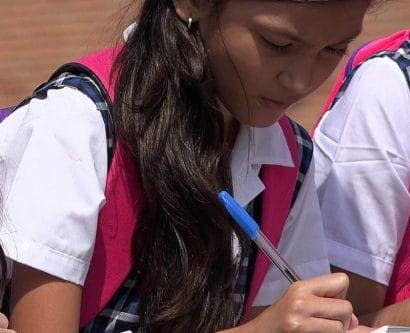How to Create an Effective Culture of Safeguarding in Schools
Effective safeguarding is essential across all education settings. Contributing towards establishing an effective culture of safeguarding – be it as a school leader, governor, Designated Safeguarding Lead, or other member of staff – means that you can help to successfully safeguard and promote the welfare of the children and young people you work with.
In this article, we will outline what a safeguarding culture means and why it is important. We will also look at how Ofsted assesses the effectiveness of a setting’s safeguarding culture. Finally, we will consider some steps towards creating and maintaining an effective safeguarding culture within your setting.
What is a Safeguarding Culture?
Before considering what a safeguarding culture is, it is useful to return to what we mean by safeguarding. Often the term is used synonymously with child protection. However, it is actually wider reaching than that.
What is Safeguarding in Schools?
The statutory guidance Working Together to Safeguard Children defines safeguarding children and young people’s welfare as:
- Protecting children from maltreatment.
- Preventing impairment of children’s health or development.
- Ensuring that children grow up in circumstances consistent with the provision of safe and effective care.
- Taking action to enable all children to have the best outcomes.
Looking at these four key tenets, one can argue that everything that takes place within education settings works towards achieving one or more of these things. Safeguarding is fundamental to education, and effective safeguarding requires an effective safeguarding culture.

A Safeguarding Culture
A safeguarding culture means that safeguarding is key to every aspect of a setting. It can be found at the heart of a schools’ values and ethos, and is subsequently reflected in its environments and practices.
Effective safeguarding does not mean simply having the statutory policies in place. It is not something that is considered only reactively when an issue arises, or a training exercise carried out at the start of each new academic year. An awareness of what constitutes effective safeguarding, and how to promote it, should be embedded within each and every aspect of the school culture.
Ultimately, all systems, processes and policies should operate with the best interests of children and learners at their core.
Ofsted
During Ofsted inspections, inspectors will look to see if there is evidence of effective safeguarding within a setting. They will draw their conclusions from a wide range of evidence sources, not restricting their evidence to that collected during the actual inspection.
Ofsted stresses that effective safeguarding is not a matter of ticking boxes, and that it should go beyond compliance. So, whilst it is vital to have the correct policies and procedures in place, this is only one step in creating a truly effective culture of safeguarding. Within a setting, for there to be effective safeguarding, it should be very well understood – lived, breathed and constantly revisited (Ofsted webinar, 2022).

An effective safeguarding culture will encompass, but will not be limited to, the following key elements:
- Settings follow safer recruitment processes.
- All staff understand and recognise risk, as well as potential signs of harm, abuse or other safeguarding concerns.
- Children, parents and staff feel empowered to report concerns and know how to do so.
- Actions in response to any concerns are timely and effective.
- Children feel safe and are confident to seek help if they need to.
- Elements of the curriculum enabling children to recognise and respond to risks to their wellbeing are successfully designed and delivered – for example, learning about online safety or healthy relationships.
- Environments are effectively designed to safeguard students – this includes physical aspects of the learning environment as well as more cultural or behavioural elements, such as zero-tolerance of discriminatory language.
- Leaders create a culture of vigilance and continuously communicate the importance of safeguarding throughout the school community.
We will look in detail at some of these and other elements later in the article. Full guidance regarding Ofsted’s expectations around effective safeguarding can be found here.
Why is an Effective Culture of Safeguarding Important in Schools?
Everyone has a responsibility to promote the welfare of, and to safeguard, children and young people. Working in an education setting means that you get to know the young people in your care and are well placed to notice when something might indicate an issue. Teaching professionals and others who work with children have additional safeguarding responsibilities as laid out in legislation and statutory guidance.
An effective safeguarding culture helps to ensure that children and young people are able to learn and play in a safe environment where they feel secure. It will empower staff to recognise if a child might be at risk of harm, and to be able to take appropriate action if they are concerned.
An effective safeguarding culture will teach children and young people what it means to be safe, how to behave appropriately towards others and how to recognise if they are at risk or experiencing harm. It will provide them with clear means to access support, knowing that their concerns will be taken seriously.

How to Create and Communicate a Culture of Safeguarding
Although the list below is not by any means exhaustive, considering the following can help you take steps towards creating and maintaining a culture of safeguarding in your setting.
Vigilance
An effective safeguarding culture should be one of vigilance, and the cornerstone of vigilance is accepting that issues can occur in your setting. There have been many cases where safeguarding has fallen short, and concerns have not been acted upon, due to attitudes such as ‘it couldn’t happen here’ or ‘we are one big happy family’.
In a 2022 webinar, Ofsted suggest that staff should keep the following phrase in mind:
‘It could happen here…and it probably is.’
Whilst uncomfortable, appreciating the fact that you will be working with some children who are experiencing abuse, neglect or other safeguarding issues, means that your levels of vigilance will be higher. Professional curiosity and the willingness to provide professional challenge, where appropriate, are essential. Staff also need to appreciate that children will often not disclose abuse, or in some cases, even realise that abuse is taking place.
Safer Recruitment
Safer recruitment procedures, as laid out by statutory guidance, need to be in place where individuals work (including in a voluntary capacity) with children. Your setting’s commitment to an effective culture of safeguarding should be expressed at every stage of the recruitment process.
Remember, safer recruitment does not end when a person is employed or engaged, but rather it is something that accompanies an individual’s entire employment journey. Leaders should consider ongoing suitability as part of their safeguarding culture. Our Safer Recruitment in Education course offers detailed training.

Effective Relationships
Establishing and modelling effective relationships is also key to creating and communicating a culture of safeguarding. These include:
- Relationships between staff. Staff need to feel professionally supported and able to access advice and training regarding safeguarding. Remember, settings also have a responsibility to safeguard their staff – staff must equally feel safe and able to access support or make a complaint, should they need to.
- Relationships with other agencies or professionals. It is essential that school staff are able to work effectively with other agencies involved in safeguarding the children and young people in their care, such as children’s social care.
- Relationships with pupils. Pupils need to feel that there are trusted adults that they can turn to for support.
- Relationships with parents.
- Relationships between children.
There is a statutory requirement for both the primary and secondary curriculum to include relationships education. Schools should invest in making sure teachers feel confident to teach this content and provide training where appropriate, as this is an important part of creating a safeguarding culture.
Policies and Procedures
In addition to your core safeguarding policy, there are a range of policies that will impact upon, and reflect, your culture of safeguarding. You can read our article regarding different school policies here.
It is essential that all policies and procedures are clearly understood, accessible and communicated effectively. Leadership teams should consider how they evaluate this. It is not sufficient to write and publish a policy but then not follow up.
Staff should receive explicit and regular guidance or training in terms of procedures, including those around identifying, responding to and recording concerns, or conducting risk assessments. It is vital that all staff feel confident using the reporting systems – be they specific in-house systems or specially designed software platforms. Providing staff with accessible reminders, such as a safeguarding flowchart, can help illustrate the process.

Training
High quality, regular safeguarding training for all staff is essential. It is not possible for someone to be vigilant if they do not know what they need to be concerned about, what signs to look for or how to respond to concerns.
Safeguarding is not fixed – it evolves and responds to the changing risks of the world in and out of school. For instance, a decade ago there would have been less emphasis on online risk, risk of radicalisation, or on promoting mental wellbeing within safeguarding priorities. Revisiting your safeguarding knowledge is an important part of your continued professional development.
Need Safeguarding Training?
Our range of Safeguarding Training Courses aim to provide you with the required knowledge to carry out your work whilst meeting safeguarding training requirements. Take a look at our course library where you’ll find everything from Designated Safeguarding Lead to Harmful Sexual Behaviour in Schools and Online Safety and Harms.
Keeping Children Safe in Education (KCSIE) lays out the statutory expectations around safeguarding training for school staff, and is regularly updated to reflect changing priorities as mentioned above.
Staff should be trained to recognise risk and to consider factors which might influence this. Training should include, amongst other things, an understanding of:
- The prevalence of child on child abuse, which includes sexual harassment and online sexual abuse. Following the Ofsted Review of Sexual Abuse in Schools and Colleges, it is recommended that settings assume that this is happening in their setting (even if no reports have been made) and that there are whole-school approaches in place to tackle this.
- The fact that children and young people with Special Educational Needs and/or Disabilities (SEND) are more likely to experience abuse, including child on child abuse. Staff should be aware that signs of concern might be missed or misinterpreted.
- The fact that children who identify as, or are perceived to be, LGBTQ+ may be more likely to experience abuse, including child on child abuse.
- Extra-familial safeguarding risks, and what those might be in the context of the particular setting (for example, some localities might experience greater risk of Child Criminal Exploitation or County Lines activity). It is important that staff are aware of additional contextual risks in their settings.
- Relevant policies and how these should be reflected in their own practice.
- The procedure for reporting concerns in their settings.
Designated Safeguarding Leads (DSLs) have additional responsibilities and require additional training in order to fulfil those responsibilities.
In addition to providing training, leadership teams should consider how they ensure that staff understand and are able to use their training effectively. How is this monitored?

Continuous Learning
It is part of the DSL’s role to keep staff updated with regards to safeguarding issues. This could be through regular sessions during staff meetings, email bulletins, organising specific staff development (for individuals or groups) or by sharing articles, guidance and research.
A culture of safeguarding includes continually revisiting the topics. It is not enough to simply give staff refresher training each September. Conversations should be ongoing, and include opportunities for reflection and evaluation.
Communication
Communication is key to an effective safeguarding culture. Clear lines of communication help to make sure all members of the school community are aware of safeguarding expectations, issues, policies and procedures – including how to raise concerns and access help.
As with all good communication, this needs to be a two-way process and may include:
Communication with parents or carers
This might be individually in relation to particular issues or concerns, or as a group to regularly make them aware of risks, such as those relating to online harms. Parents should have a clear understanding of who to voice their concerns to, or seek advice from,, in relation to safeguarding issues.
Communication with students
Children and young people should receive regular communication regarding safeguarding – including online safeguarding – from a wide variety of sources, including:
- Taught lesson content.
- Pastoral communication via assemblies, form time, awareness events, etc.
- Messaging around the school environment – for example, signposts to sources of support in common areas.
- Communication of policies – such as behaviour policies, acceptable use of technology policies, etc.

Settings should also actively seek the views of students via pupil voice. This could take the form of surveys or chatting to focus groups of pupils including school councils, LGBTQ+ groups, etc.
An essential part of effective safeguarding is that pupils feel safe and this is something that Ofsted will explore and assess during their inspections. Leadership teams should not assume that just because they feel everything is in place that should be, that pupils actually feel safe.
The review into sexual abuse in schools and colleges highlighted that many children were accepting abuse as a fact of school life and not reporting it to staff. Schools should actively seek and, importantly, act on, the views of pupils, in order to make sure that their safeguarding practices are as effective as possible, and that children know they are going to be listened to.
Each settings’ particular safeguarding culture will look slightly different – it is not possible to simply work through a list and achieve an effective safeguarding culture. A safeguarding culture is wide-ranging and embeds safeguarding – in all its forms – at the heart of a setting, then continually revisits and evaluates its principles and practices.
Further Resources:
- CPD Courses for Teaching and Education
- Safeguarding Children Legislation: Guidance for Schools
- Safeguarding Responsibilities of School Staff
- Health and Safety in Schools: Free Checklist
- Designated Safeguarding Lead Quiz
- Regulatory Requirements for Designated Safeguarding Leads in Schools
- What is Professional Curiosity in Safeguarding?
- What is Contextual Safeguarding & Why is it Important?
- What is Safeguarding Training & Why is it so Important?
- School Trip Risk Assessment Template for Teachers
- What is Restorative Practice in Schools & Social Work?
- How to Create a Positive Learning Environment
- Leadership in Education: Hierarchy and Leadership Styles
- Social Skills in Children
- Vaping in Schools: A Growing Concern and How to Address It











